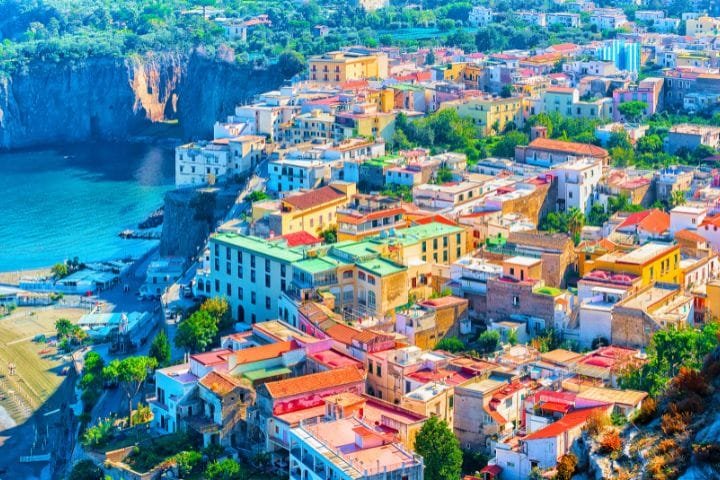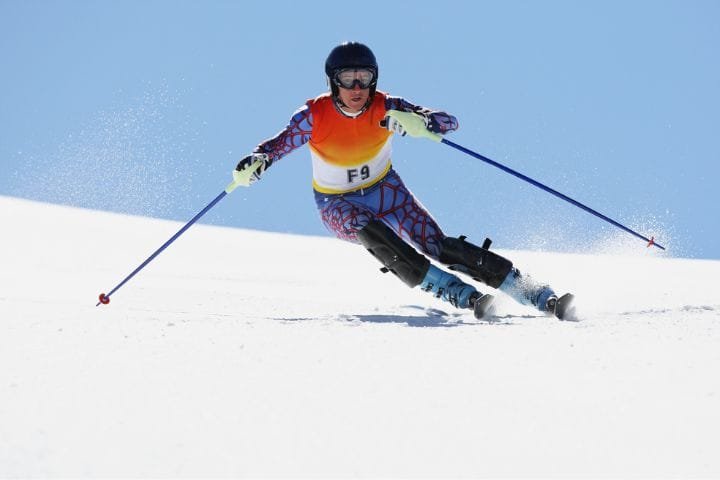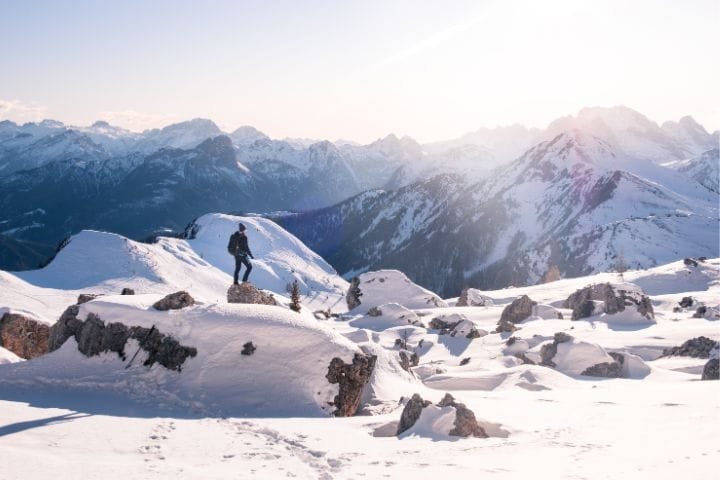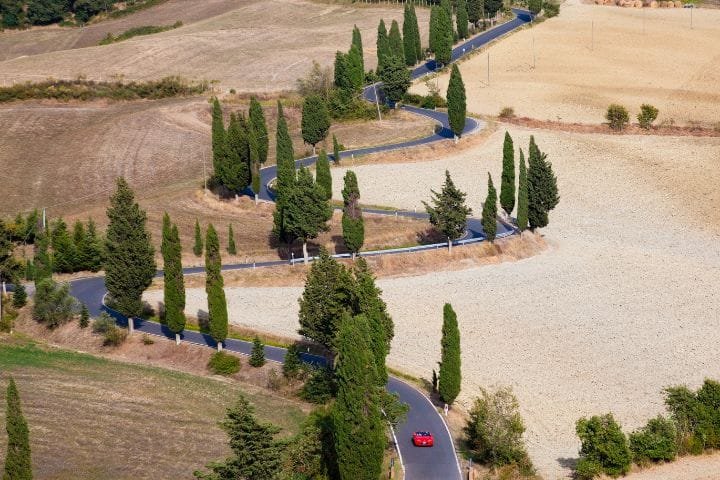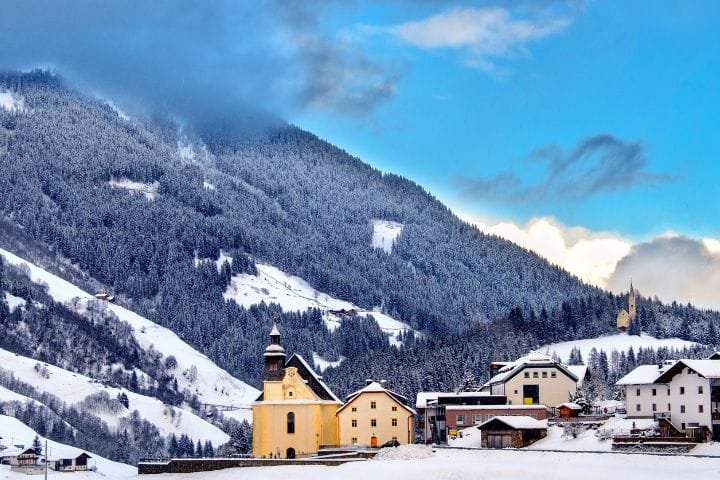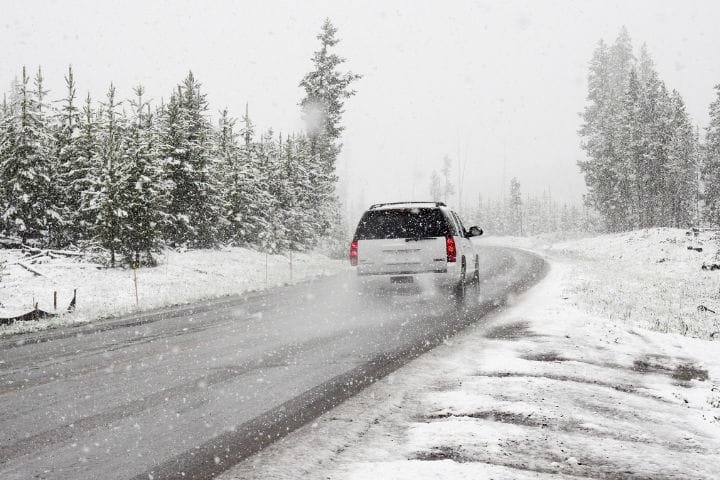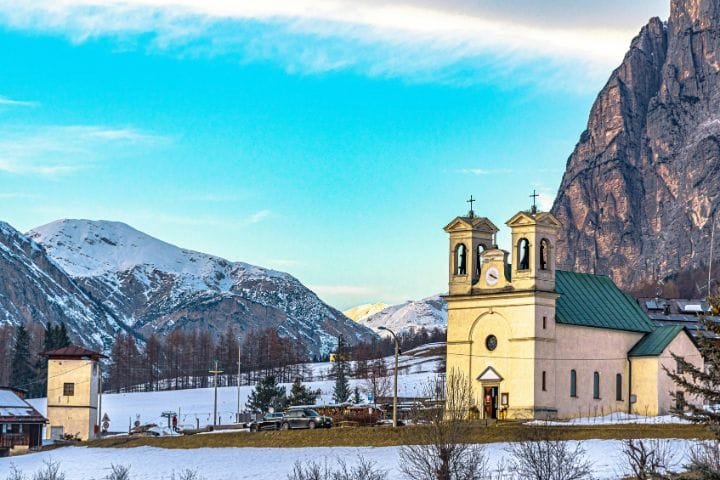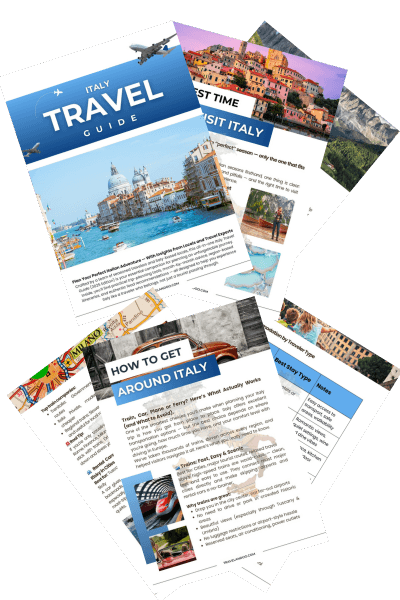Dolomites Driving Guide: Scenic Routes, Safety Tips & Road Trip Planning (2025)

by Hwan | Last Updated December 19, 2025
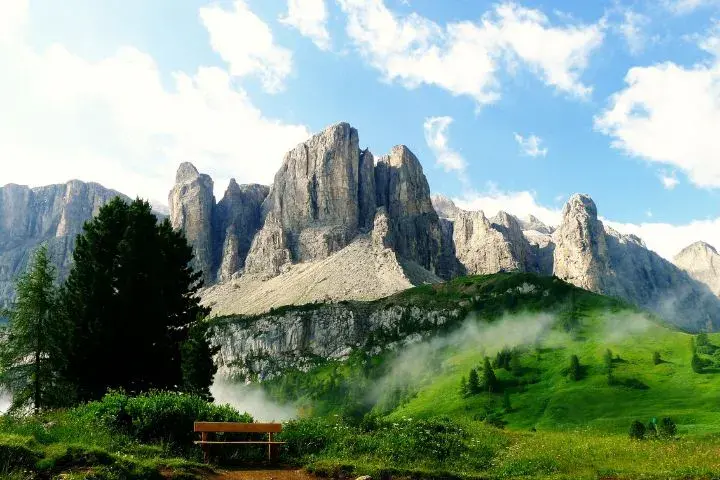
Planning to drive through Italy’s breathtaking Dolomites and feeling a mix of excitement and tension about those legendary mountain roads? You’re absolutely right to feel both!
After countless journeys through these UNESCO World Heritage peaks over the past fifteen years, I can honestly say that driving in the Dolomites is like navigating through a living postcard – absolutely breathtaking, occasionally terrifying, and always unforgettable.
These dramatic limestone towers rising from emerald valleys create driving routes that are literally world-famous, but they demand respect, preparation, and proper knowledge to navigate safely.
Did you know that the Dolomites feature some of Europe’s most spectacular mountain passes, including popular routes that reach altitudes over 2,700 meters?
From the serpentine curves of the Stelvio Pass to the heart-stopping beauty of the Sella Ronda circuit, these roads offer automotive adventures that combine stunning Alpine scenery with serious driving challenges.
Whether you’re planning a romantic scenic drive through flower-filled meadows, an adrenaline-pumping ascent of famous mountain passes, or a comprehensive road trip covering multiple valleys and peaks, understanding the Dolomites’ driving conditions, safety requirements, and route planning is essential for both enjoyment and survival.
Let’s dive into this Dolomites driving guide and discover how to navigate these breathtaking mountain roads safely, while making the most of one of the world’s most spectacular alpine driving adventures!
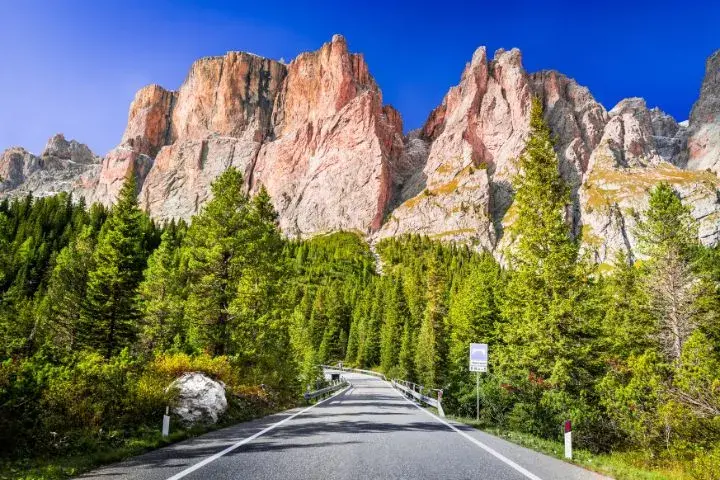
🧭 Where the Dolomites Fit Among Italy’s Scenic Drives
The Dolomites offer some of Italy’s most dramatic mountain scenery and are best enjoyed as part of a wider Northern Italy route.
- Compare alpine routes with lakes and countryside → Best scenic drives in Italy
- Plan mountain days with realistic pacing → How to plan a perfect Italy road trip
Essential Dolomites Driving Preparation and Requirements
Documentation for driving in the Dolomites follows standard Italian requirements; however, mountain conditions make preparation even more critical. You will need your driver’s license, an International Driving Permit (for non-EU visitors), your passport, and comprehensive insurance documentation.
Vehicle recommendations depend heavily on your planned routes and season. Any modern car can handle the major passes during good weather, but I strongly recommend vehicles with good power-to-weight ratios for sustained climbs. Manual transmissions provide better engine braking control on descents, while automatic cars should use lower gears rather than relying solely on brakes.
Mandatory equipment varies by season but always includes:
- Snow chains (November 15 – April 15, regardless of conditions)
- Emergency triangle and first aid kit
- High-visibility vests for all occupants
- Working headlights and spare bulbs
- Emergency food and water for mountain travel
Insurance considerations become crucial in alpine environments. Comprehensive coverage is essential because mountain driving increases accident risks, and recovery costs from remote locations can be astronomical. Many standard policies exclude coverage above certain altitudes, so verify your protection before departure.
Weather monitoring isn’t optional in the Dolomites – it’s survival. Mountain weather changes rapidly and dramatically. I use multiple sources, including MeteoTrentino, local tourist offices. Never attempt mountain passes during storms, fog, or when visibility drops below 50 meters.
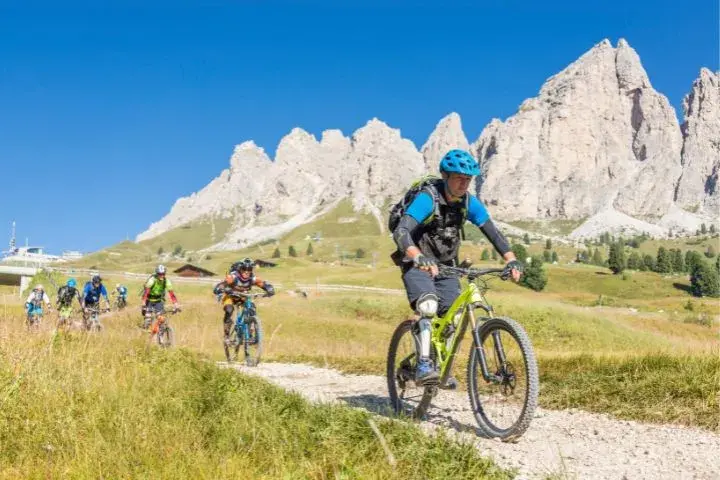
Plan Your Trip with Our Favorite Booking Tools
Major Scenic Routes and Mountain Passes
Stelvio Pass (Passo dello Stelvio) is the king of European mountain roads with 48 hairpin turns, climbing to 2,757 meters. The eastern approach from Bormio is more gradual, while the northern descent into Switzerland is heart-stoppingly steep. This pass typically opens from June through October, with July-September offering the most reliable conditions.
The Stelvio demands respect – gradients reach 18%, and the narrow road has minimal guardrails in many sections. Start early (before 8 AM) to avoid tour buses and afternoon thunderstorms. The views from the top are absolutely spectacular, but take time to appreciate them at designated stopping areas, not while driving.
Sella Ronda circuit represents classic Dolomites driving, connecting four major passes (Sella, Pordoi, Campolongo, and Gardena) in a loop that can be completed in half a day. Each pass offers different character and scenery, from the dramatic rocky towers around Sella to the gentler meadows near Campolongo.
This circuit works perfectly for testing your mountain driving skills on varied terrain. The roads are well-maintained with good safety barriers, making it ideal for drivers new to alpine conditions. Plan 4-6 hours, including stops for photography and the inevitable coffee breaks.
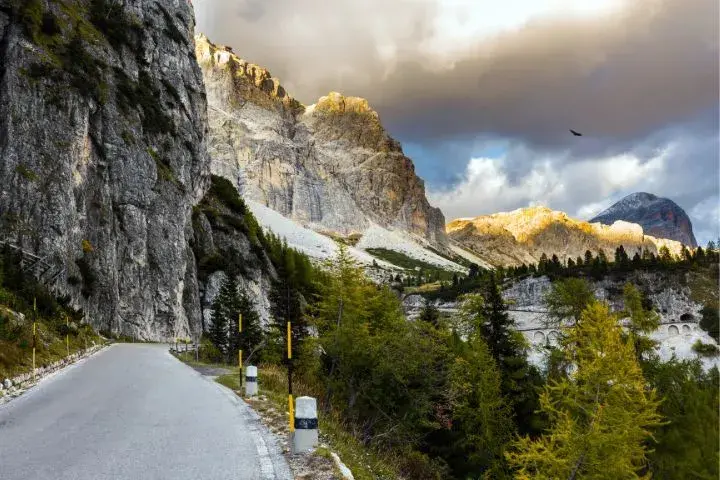
Giau Pass (Passo Giau) between Cortina and Colle Santa Lucia provides some of the most photogenic mountain scenery in Europe. At 2,236 meters, it offers incredible views of Pelmo and Civetta peaks. The road is narrow with steep sections, but the payoff is worth every adrenaline-charged moment.
Falzarego Pass connects the Cortina area with Val Badia, offering excellent road conditions and spectacular mountain vistas. The tunnel option provides weather protection, while the open pass offers panoramic views when conditions permit.
The Great Dolomites Road (Grande Strada delle Dolomiti) from Bolzano to Cortina showcases the region’s diversity over 110 kilometers of varied terrain. This historic route passes through multiple valleys and over several passes, providing an excellent introduction to the Dolomites’ geography and culture.
🏔️ Iconic Alpine Scenic Drives in Northern Italy
If mountain passes and panoramic viewpoints are your goal, these routes deliver unforgettable scenery.
- Alpine lakes, passes, and dramatic viewpoints → Best scenic drives in Northern Italy
- Lakeside scenery with easy access from cities → Milan to Lake Como scenic drive
Safety Tips for Mountain Driving
Altitude effects impact both vehicles and drivers in ways many people don’t anticipate. Engine power decreases about 3% per 300 meters of elevation, meaning your car will feel slow at high altitudes. Driver fatigue increases due to reduced oxygen levels, so take frequent breaks and stay hydrated.
Gear selection becomes critical for safe mountain driving. Use lower gears for both climbs and descents to maintain engine braking. On steep descents, never ride the brakes continuously – they’ll overheat and fade. Instead, use engine compression and brief brake applications to control speed.
Passing protocols on narrow mountain roads require patience and excellent judgment. Only pass on straight sections with clear visibility, and always yield to ascending traffic. Tour buses and cyclists have the right-of-way on most mountain roads. Use turnouts to allow faster traffic to pass rather than holding up long convoys.
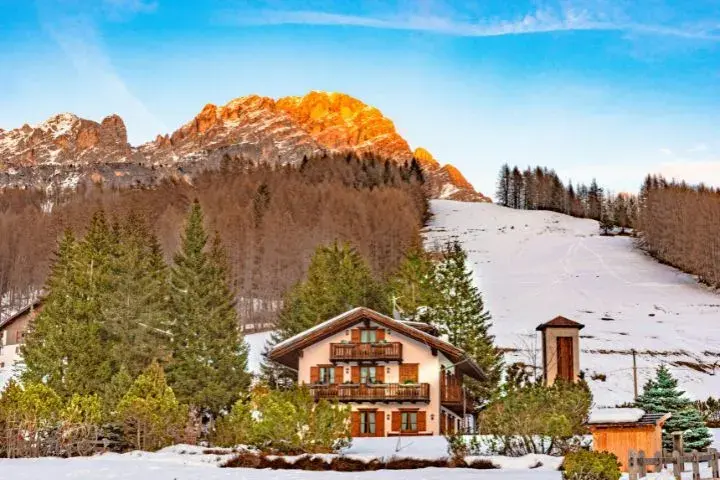
Emergency procedures in mountain areas differ significantly from urban breakdowns. Cell coverage is spotty, so inform someone of your route and expected arrival times. Carry emergency supplies, including warm clothing, food, water, and a flashlight even during summer driving.
Wildlife awareness includes deer, marmots, and occasionally bears in remote areas. Dawn and dusk present the highest risk periods. Reduce speed in forested areas and be prepared for sudden animal appearances, especially after rain, when animals seek salt from road surfaces.
Seasonal Driving Conditions and Timing
Summer driving (June-September) offers the most reliable conditions, with all major passes typically open. July and August bring peak tourist traffic, requiring early departures to secure parking at popular viewpoints. Afternoon thunderstorms are common, often with dramatic temperature drops and sudden fog.
Weather in summer can change from brilliant sunshine to snow flurries within hours at high elevations. Always carry warm clothing and rain gear, even for short drives. The famous Dolomites light show occurs during golden hour (sunrise and sunset), making these the most rewarding but also busiest driving times.
Spring and autumn challenges include unpredictable weather, seasonal road closures, and variable snow conditions. April-May and October-November offer fewer crowds but require constant weather monitoring. Some passes may close suddenly due to unexpected snowfall or maintenance work.
Winter restrictions typically close high-altitude passes from November through May. Snow chain requirements are strictly enforced, and many roads become accessible only to experienced alpine drivers with proper equipment. Several passes like Stelvio close completely during the winter months.
Snow chain installation skills are mandatory for winter Dolomites driving. Practice installation in good conditions before attempting it on a snowy mountain roadside. Rental car companies usually provide chains, but verify this when booking and learn the specific installation procedure for your vehicle.
Peak season traffic strategies include:
- Start driving before 7 AM to reach the passes before tour buses
- Use weekdays when possible to avoid weekend crowds
- Plan longer routes during peak hours rather than sitting in mountain traffic
- Book accommodation well in advance in popular base towns
Planning Your Dolomites Road Trip Itinerary
Multi-day route suggestions should account for realistic daily driving distances and mountain conditions. A classic week-long circuit might include Bolzano (2 nights), Cortina d’Ampezzo (2 nights), Val Gardena (2 nights), and return. This allows time for weather delays and spontaneous discoveries.
Daily driving distances in mountains take much longer than flat terrain suggests. Plan for a maximum of 150-200 kilometers per day, including stops, and always have backup indoor activities for bad weather days.
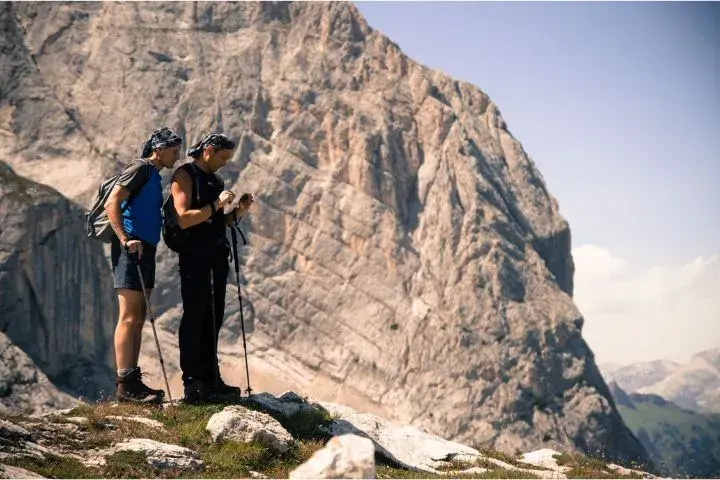
Base town selection impacts your entire experience. Bolzano offers urban amenities and serves as the gateway to multiple valleys. Cortina provides a luxury mountain resort atmosphere with excellent road connections. Smaller towns like Canazei or Ortisei offer authentic alpine culture with lower costs.
Accommodation booking near scenic routes requires advance planning, especially for properties with guaranteed parking. Mountain hotels often have limited spaces, and street parking may be impossible in small villages.
Fuel stations become strategic considerations in mountain areas. Fill up in valley towns before ascending passes, and don’t rely on finding fuel at high elevations. Some remote passes have no services for 50+ kilometers.
Photography timing requires understanding mountain light patterns. Golden hour occurs earlier and later at high elevations due to surrounding peaks. The famous Dolomites alpenglow typically occurs 30-45 minutes after sunset, requiring patience but delivering spectacular results.
Navigation and Technology for Mountain Roads
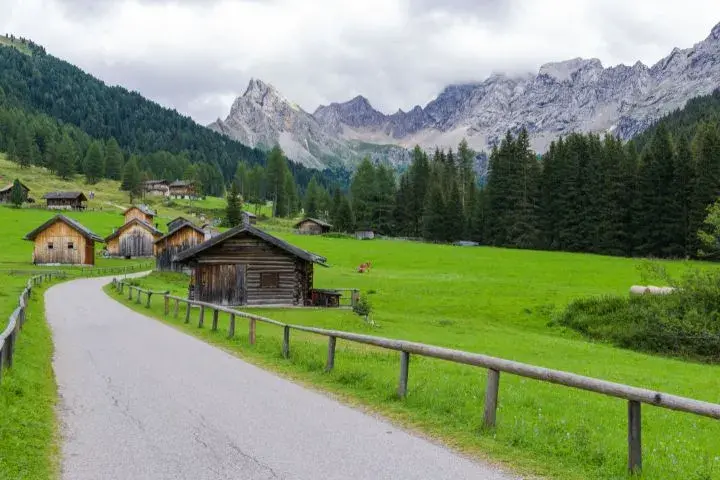
GPS limitations in mountain terrain include delayed satellite acquisition, inaccurate arrival times that don’t account for mountain driving speeds, and dangerous routing through closed or inappropriate roads. Always verify GPS routes with local information and current road conditions.
Offline maps become essential backup navigation when cell coverage disappears in remote valleys. Download detailed topographic maps covering your entire route, including alternative paths in case of closures.
Mobile coverage varies dramatically throughout the Dolomites. Italian carriers generally provide better coverage than international roaming plans. Consider purchasing a local SIM card for extended trips requiring reliable communication.
Road condition apps like InfoViabilità Trentino and Alto Adige Mobilità provide real-time updates on pass conditions, closures, and weather warnings. These regional apps often have more current information than general navigation systems.
Traditional map-reading skills remain valuable backup when technology fails. Carry detailed paper maps and know how to interpret topographic information, elevation profiles, and road symbols indicating difficulty levels.
Base Towns and Strategic Stopping Points
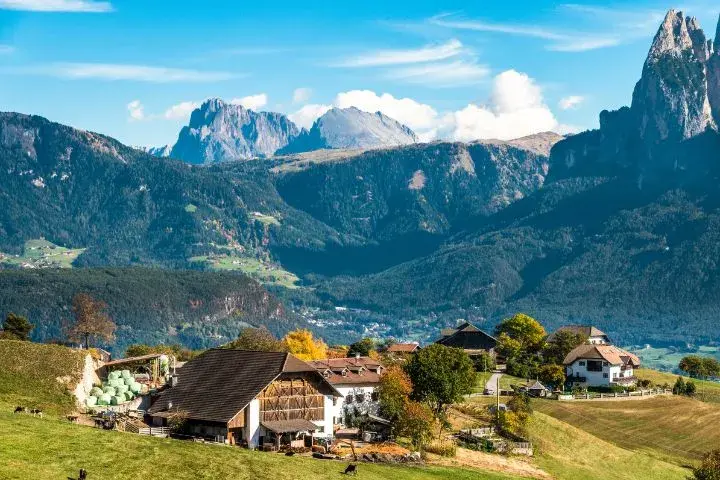
Bolzano serves as the perfect gateway to the Dolomites with excellent highway connections, full services, and multiple route options. The city offers cultural attractions, shopping, and dining that complement mountain adventures. Parking is readily available, and it’s an ideal place for final preparations.
Cortina d’Ampezzo represents the luxury mountain resort experience with upscale accommodations, excellent restaurants, and proximity to famous passes like Falzarego and Giau. The town can be expensive and crowded during peak season, but the setting is incomparable.
Val Gardena towns (Ortisei, Selva, Santa Cristina) provide authentic South Tyrolean culture with German and Italian influences. These locations offer excellent access to the Sella Ronda circuit and maintain more reasonable pricing than Cortina.
Canazei and Val di Fassa region offers dramatic Dolomites scenery with fewer crowds than the more famous areas. The Pordoi Pass starts here, and the valley provides excellent hiking and cultural opportunities.
Lesser-known valleys, such as Val di Zoldo or Val Comelico, offer authentic mountain experiences that are free from tourist infrastructure pressures. These areas require more planning but reward adventurous drivers with genuine alpine culture and spectacular, untouched scenery.
Practical Road Trip Logistics
Fuel costs in mountain areas run significantly higher than valley prices. Budget €1.80-2.00 per liter at high-elevation stations, compared to €1.60-1.70 in larger towns. Always fill up before ascending remote passes.
Parking at viewpoints often requires hiking boots and early arrival. Popular spots like Seceda or Alpe di Siusi fill up by 9 AM during peak season. Consider using cable cars and leaving your vehicle in the valley parking areas for major attractions.
Road tolls are minimal within the Dolomites region, but highway approaches may require vignettes or toll payments. Austrian vignettes cost €9.60 for 10 days if approaching via Innsbruck.
Emergency contacts are essential for mountain driving:
- General emergency: 112
- Alpine rescue: 118
- Road assistance: 116
- Weather information: local tourist offices
Local driving customs include yielding to ascending traffic, using turnouts courteously, and respecting cycling groups. Horn use is discouraged except for true emergencies. Mountain driving requires patience and mutual respect among all road users.
Plan Your Trip with Our Favorite Booking Tools
Conquering the Dolomites Behind the Wheel
Look, after fifteen years of mountain driving in these incredible peaks, I can tell you that the Dolomites offer some of the most rewarding automotive experiences on the planet. But they also demand serious respect, thorough preparation, and a willingness to adapt to conditions that can change dramatically within minutes.
The key to successful Dolomites driving is understanding that these aren’t just scenic routes – they’re serious mountain roads that require specific skills and equipment. Take time to develop proper alpine driving techniques, invest in good preparation, and always prioritize safety over schedules.
My biggest recommendation? Start with easier passes like the Sella Ronda to build confidence before attempting challenges like the Stelvio. Use good weather windows wisely, but don’t be disappointed when mountain conditions force route changes – some of my best discoveries happened when weather forced me to explore unexpected valleys.
Drive carefully, prepare thoroughly, and get ready for one of the world’s ultimate mountain driving adventures!
🎯 Who the Dolomites Are Best For
Not every scenic route suits every driver — confidence and timing matter in the mountains.
- Drivers seeking iconic scenery with less stress → Best scenic drives in Northern Italy
- Alpine adventures beyond driving → Dolomites via ferrata guide
FAQs on Dolomites Driving Guide
What are the most scenic driving routes in the Dolomites?
Sella Ronda circuit connects four major passes (Sella, Pordoi, Campolongo, Gardena) in a stunning loop, taking 4-6 hours.
Stelvio Pass features 48 hairpin turns, climbing to 2,757 meters with breathtaking views. Giau Pass offers incredible photography opportunities with Pelmo and Civetta peaks.
The Great Dolomites Road from Bolzano to Cortina showcases regional diversity over 110 kilometers. Start early (before 8 AM) to avoid tour buses and afternoon thunderstorms.
When is the best time to drive in the Dolomites?
June-September offers the most reliable conditions, with all major passes typically open. July-August brings peak crowds requiring early departures.
Spring (April-May) and autumn (October-November) have fewer tourists but unpredictable weather and possible sudden closures.
What safety equipment and preparations are required?
Mandatory equipment includes snow chains (November 15-April 15, regardless of conditions), emergency triangle, first aid kit, high-visibility vests, and spare bulbs.
Carry emergency supplies (warm clothing, food, water, flashlight) even in summer. Comprehensive insurance is essential due to mountain risks and expensive recovery costs. Monitor weather constantly and never attempt passes during storms or poor visibility.
Are there any special driving techniques for mountain passes?
Use lower gears for climbs and descents to maintain engine braking – never ride brakes continuously on steep descents as they’ll overheat. Yield to ascending traffic and use turnouts to let faster vehicles pass. Start early to avoid afternoon thunderstorms and tour bus traffic. Reduce speed in forested areas due to wildlife, especially at dawn and dusk. Take frequent breaks due to altitude effects on both drivers and vehicles.
What should I budget for fuel, and where can I find gas stations?
Budget €1.80-2.00 per liter at high-elevation stations vs €1.60-1.70 in valley towns. Always fill up in larger towns before ascending remote passes – some passes have no services for 50+ kilometers.
Plan fuel stops strategically, as mountain driving consumes more fuel due to elevation and constant gear changes. Keep emergency fuel if traveling remote routes during the off-season when stations may be closed.
🏁 Build a Mountain-First Scenic Italy Route
Use the Dolomites as the high point of your journey, then connect outward to lakes, cities, or the coast.
- Choose complementary regions and routes → Best scenic drives in Italy
- Keep mountain driving enjoyable and realistic → How to plan an Italy road trip
💬 We’d love to hear from you!
Have questions, tips, or personal travel stories to share? Drop them in the comments below — your insights help fellow travelers plan their adventures too.


